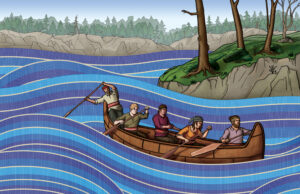The welfare of marine mammals has been a public concern for years, and now the Ontario government hopes to be the first in Canada to improve the quality of life for these animals in captivity.
In late January, Community Safety Minister Yasir Naqvi proposed new regulations that will aim to more strictly regulate the standards of care for marine mammals and prohibit the breeding of orcas in the province. “The protection of animals is our number-one priority [and] making sure the health and welfare of the animals have the highest standards in place,” he said.
The new set of regulations for standards of care were drafted after three scientists presented a 128-page report to the provincial government in June 2014. The report details the inadequacies of the Ontario Society for the Prevention of Cruelty to Animals’ (OSPCA) existing guidelines, which are currently the primary set of regulations concerning marine mammals.
According to the report, the OSPCA guidelines are “broad” so that they can be applied to the greatest number of species as possible. The report notes that although there are special provisions in the guidelines for some species, there are none for marine mammals.
The report also states that only the Fisheries Act includes regulations for marine mammals in public display facilities, but that the act only covers the “capture or release of wild marine mammals in Canadian waters, and the transport of captive marine mammals across Canadian borders,” with no legislation on how to care for these animals.
Another issue raised is the competence of OSPCA inspectors.
“When responding to complaints about the welfare of marine mammals in public display facilities, inspectors and agents of the OSPCA may, in some cases, lack specialized training or zoological expertise to support reasonable and appropriate translation of existing Standards,” the report says.
The committee of scientists, chaired by David Rosen, a University of British Columbia professor and marine biologist, created a list of recommendations for regulations to supplement the OSPCA. Naqvi hopes to enact these by July.
These include more reliable water quality, adequate supply of water, guaranteed access to a qualified marine mammal veterinarian, increased minimum space requirements, protection from exposure to distressing noise and light in public spaces, and suitable social and environmental programs for the animals.
The report suggests that the OSPCA also adopt the Canadian Council on Animal Care (CCAC) guidelines on marine mammal care. The 81-page CCAC document includes regulations for facilities and maintenance, waste management, machinery and equipment, emergency plans, transportation of animals, health care and the acquisition, reproduction, capture and release of the animals.
As for putting an end to the breeding of orcas, Naqvi said that those laws will have to be passed through legislation and that his office has created a technical advisory group of scientists and companies to consult.
Naqvi said that this group includes companies such as Marineland Canada, which was the subject of controversy after a 2012 Toronto Star investigation alleged that Marineland had abused its only orca whale (and the only one in captivity in Canada).
Marineland told media in January that it supports the new regulations. However, Naqvi says that the group will ultimately base all of its “decisions on scientific and expert advice,” mostly received from Rosen and his committee. “At the end of the day, the goal of our government and the premier is the protection of animals,” he said.






